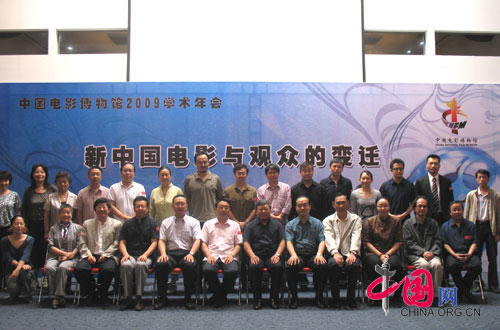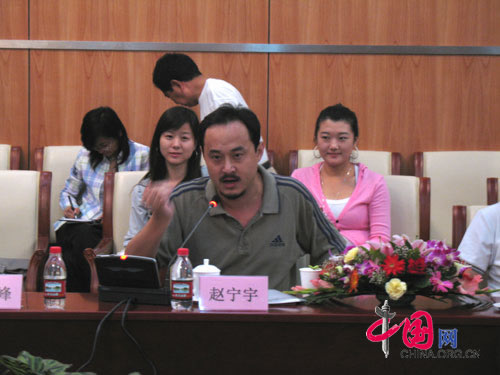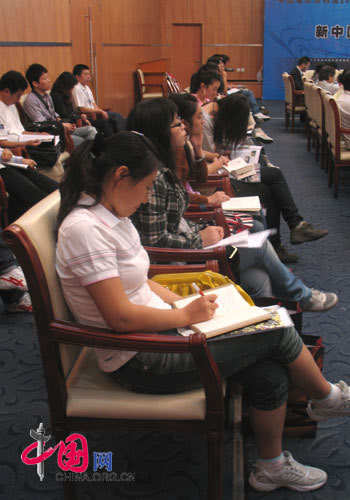Scholars joined film fans at the China National Film Museum (CNFM) yesterday to discuss 60 years of Chinese film industry. The discussions ranged over the profound changes in Chinese movies and the Chinese movie audience over the past 6 decades.
|

|
|
Scholars attending the meeting [China.org.cn] |
The history of Chinese cinema since 1949 can be divided into five main phases, according to Professor Hu Zhifeng of the Communication University of China. The basic model of Chinese films was defined during the period from 1949 to 1966. Movies were ideological, reflecting the revolutionary spirit of the times, and techniques and aesthetic values were inherited from the Soviet Union. Movies were essentially didactic and one of their key aims was to teach audiences to respect film and film industry. During the "Cultural Revolution" decade, from 1966 to 1976, this model was taken to extremes.
The third phase came in the 1980s, as Chinese films began to take a more critical view of Chinese reality and reflect on the country's recent history. Chinese film makers were increasingly able to view movies from the United States and Europe and during the 1990s Chinese films entered a phase of painful exploration and reshaping. The development of a market economy and the rise of television meant Chinese movies no longer had a captive market. Film makers stopped trying to teach their audience ideological lessons and the industrialization of film production became an irresistible trend. But very few Chinese films managed to make a profit. This all changed in the 21st century when, with government support, the industry was restructured and began to turn out blockbusters such as "Hero" and "Crouching Tiger, Hidden Dragon" both of which became huge hits overseas.
Professor Hu said Hollywood would not be able to wrest control of the domestic market from Chinese film-makers and called on directors to stick to a Chinese style of movie-making while importing skills and technique from abroad.
But Professor Zhao Ningyu, also from the Communication University of China, said Chinese film makers need to develop new forms and approaches to satisfy the demands of the increasingly differentiated movie-going public. Competition over the next 3-5 years would be fierce, he predicted, and only those well-positioned and able to deliver attractive products will survive.
|

|
|
Professor Zhao Ningyu from the Communication University of China [China.org.cn] |
Zhao Weifang of the China Arts Academy pointed to a little-discussed trend – the growing popularity and influence of Chinese mainland movies in Hong Kong. Young scholar Xu Fan, from the Communication University, gave an account of the new movie audience of the 1980s generation. Professor Chen Shan, from the Beijing Film Academy, discussed Chinese animation from a cultural perspective.
Film fans also made their voices heard, not always chiming with the analyses of the academics. One wanted cinemas to re-screen movies from previous decades to attract an older audience and give the younger generation a peek at the classics.
 |
|
Students and fans taking notes [China.org.cn] |
Yesterday's event drew scholars from Peking University, Beijing Normal University, Beijing Film Academy, the Communication University of China and the China Arts Academy. CNFM will publish a collection of the papers delivered by the scholars before the end of the year and plans to host similar discussions on an ongoing basis.
(China.org.cn by Ren Zhongxi, September 14, 2009)